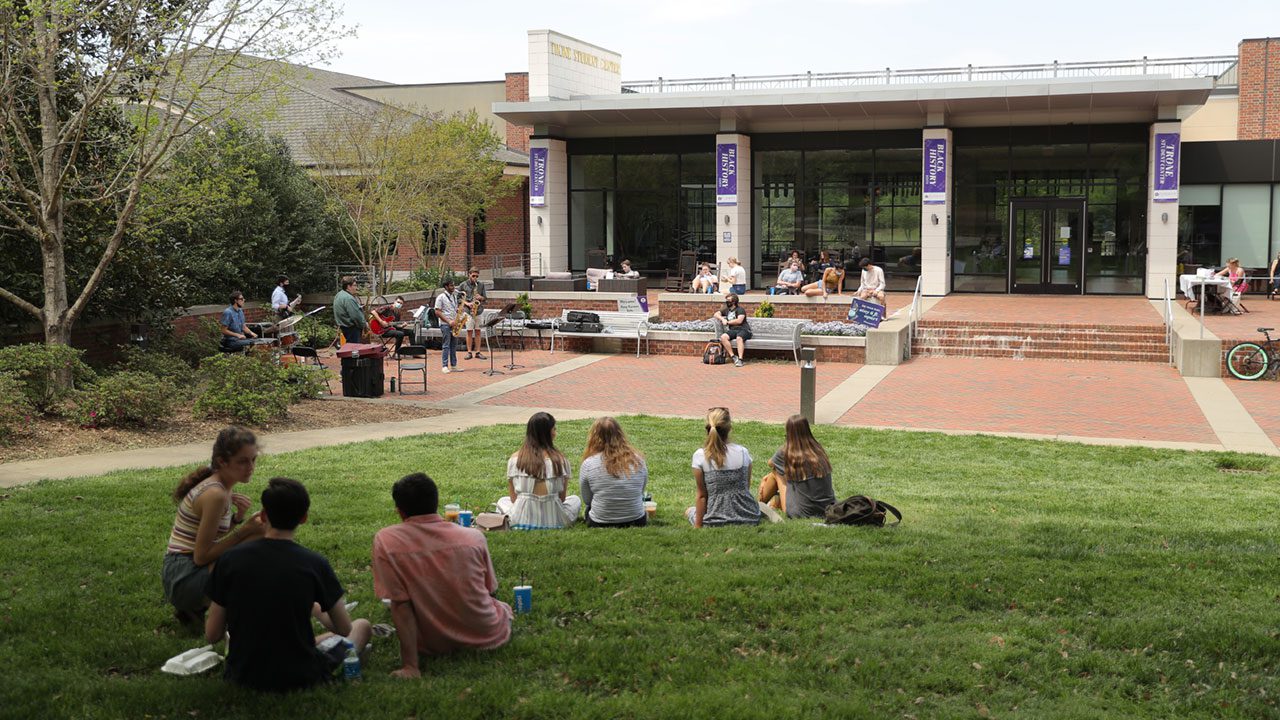
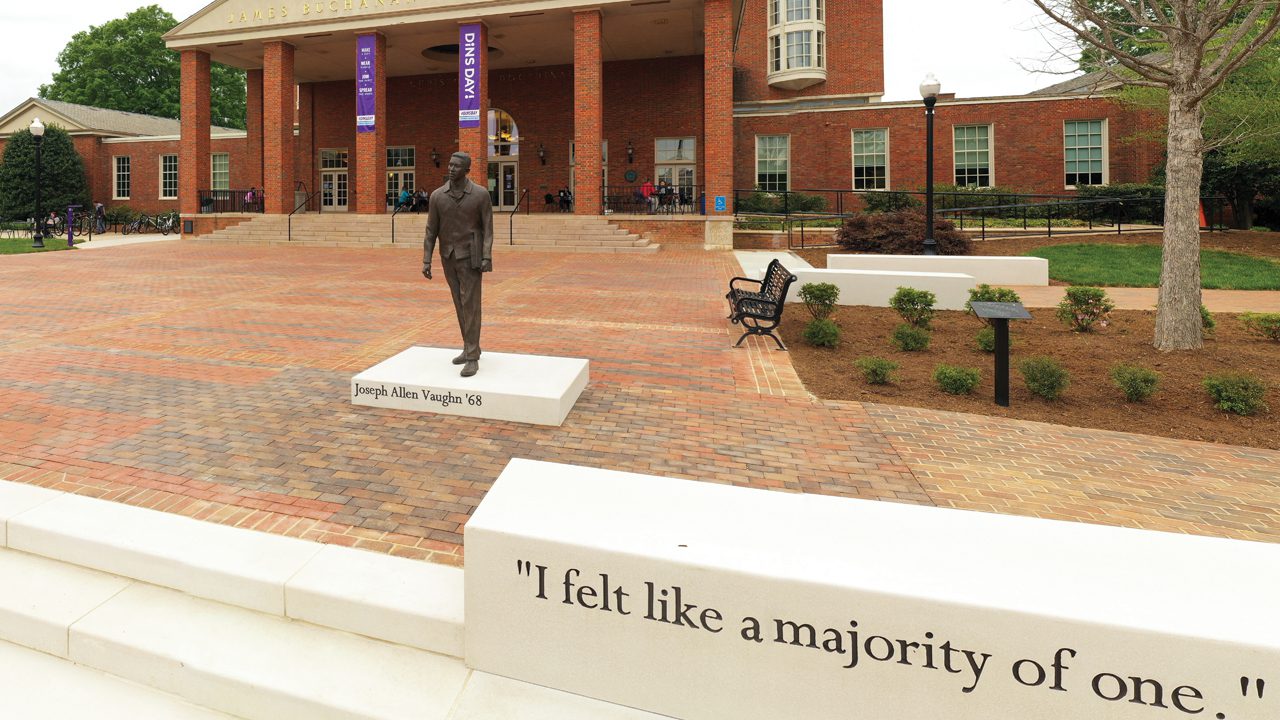
The completed Joseph Vaughn Plaza in front of the James B. Duke Library, featuring a statue of Joseph Vaughn, Furman’s first Black undergraduate student. The quotation above is a statement he once made while reflecting on his experience at Furman in his historic role in desegregation.
‘Welcoming Everyone, as Joe Would Have Done’
On April 16, we celebrated the historic unveiling of the Joseph Vaughn ’68 statue in honor his profound legacy.
By Jerry Salley ’90
Joseph Allen Vaughn ’68 wanted to be just another student. But that was never going to happen. A popular figure on campus, the Greenville native stood out as a member of the Baptist Student Union, ROTC, the Collegiate Educational Service Corps, the Southern Student Organizing Committee and the cheerleading squad. He excelled academically and graduated cum laude with degrees in English and French.
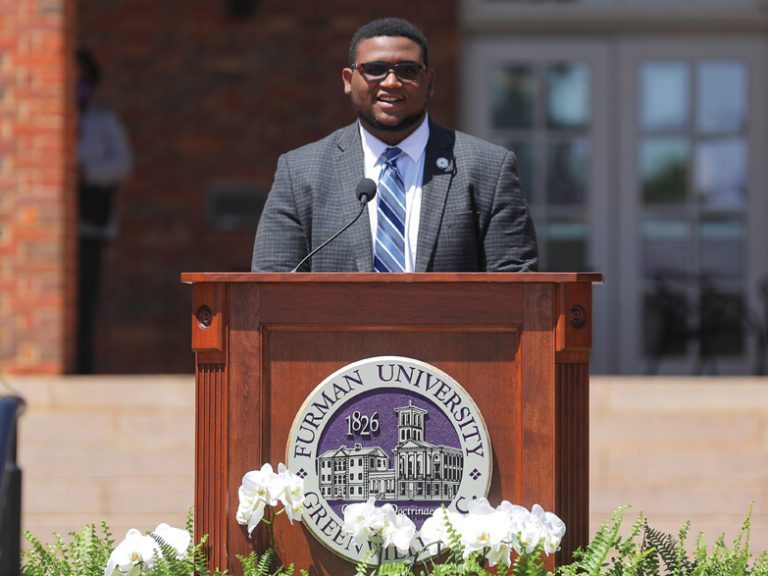
“The Furman University that stood in the 1960s is not the Furman University that stands here today,” said Qwameek Bethea ’21, president of Furman’s NAACP chapter. “But we must not let his legacy of change go unanswered.”
He was also, when he enrolled in January 1965, Furman’s first undergraduate Black student. And now his statue is the first likeness of a person of color represented prominently on campus, as the focal point of the new Joseph Vaughn Plaza in front of the James B. Duke Library. The statue, by sculptor Steven Whyte, depicts Vaughn as he appeared in a photo at that time, as his classmates often saw him: walking the library steps, books tucked under his arm.
“We very purposefully placed it here in the center of campus, the most prominent and heavily trafficked part of Furman, ”said Furman President Elizabeth Davis at the unveiling. “It’s facing outward, welcoming everyone, as Joe would have done.” After graduating, Vaughn began a long career teaching English in the Greenville County school system in 1969, working tirelessly to help his students and advocate for his fellow teachers as president of the Greenville County Association of Teachers and the South Carolina Education Association.
Meanwhile, the work that began with Furman’s integration in 1965 continued into the 21st century with the creation of the university’s Task Force on Slavery and Justice, the construction of Joseph Vaughn Plaza and the establishment of January 29 as Joseph Vaughn Day, an annual commemoration of the day Vaughn enrolled.
Hundreds of students, faculty and staff, alumni, and family and community members attended the unveiling in person or watched online. After the speeches, smiling students began taking selfies with the new statue – welcoming Joseph Allen Vaughn to Furman once again.
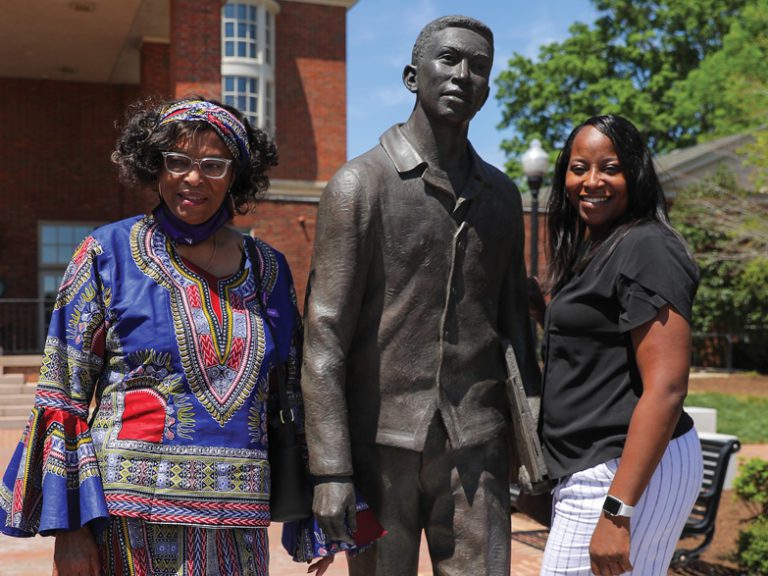
Lillian Brock Flemming ’71 M’75 H’14 and Kayla Randolph stand with the statute after its unveiling. Read more about Brock Flemming and Sarah Reese ’71 H’14, who with Vaughn formed a close-knit trio of friends.
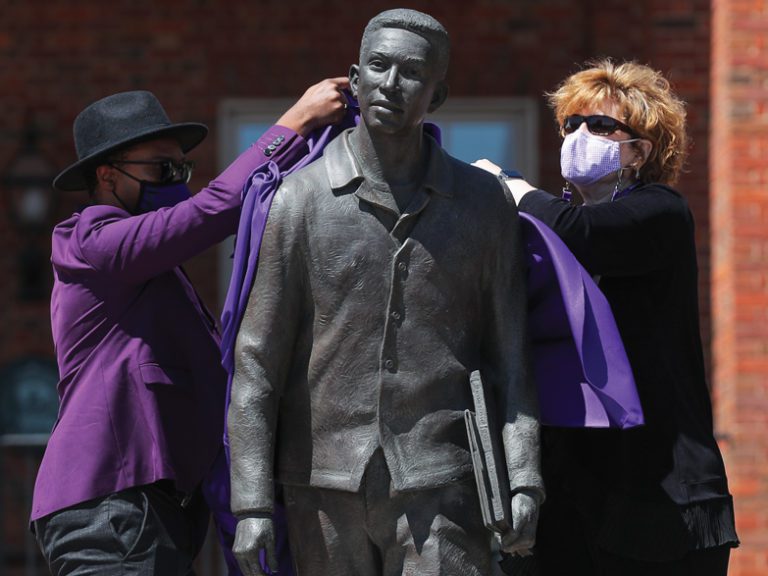
Marcus Tate, a cousin of Joseph Vaughn who attended Furman, and President Elizabeth Davis unveil the statue. Davis said the statue serves as “a beacon to everyone, but especially to people of color who might feel marginalized, people who, like Joe, might at times feels like a majority of one.”
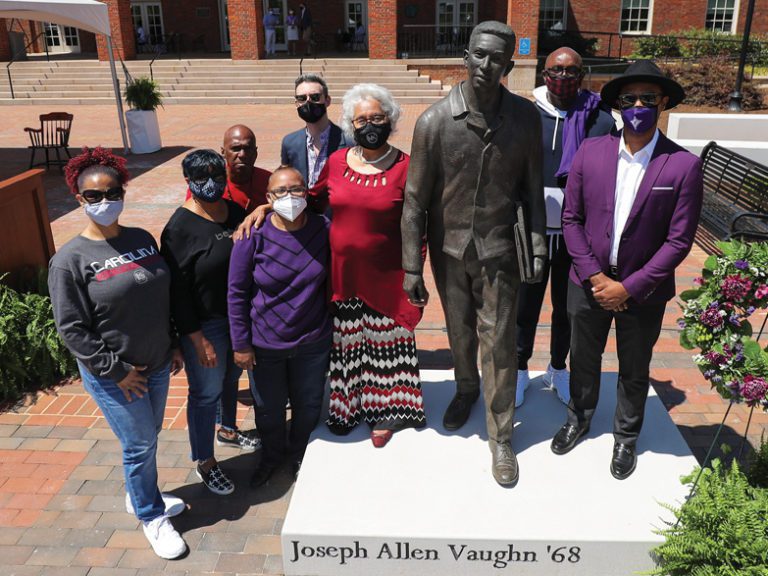
Family and admirers of Vaughn stand with the statue after the unveiling event. More than 100 people from the community, including members of Vaughn’s family, gathered on campus on April 16 to celebrate the unveiling of the Joseph Vaughn statue.
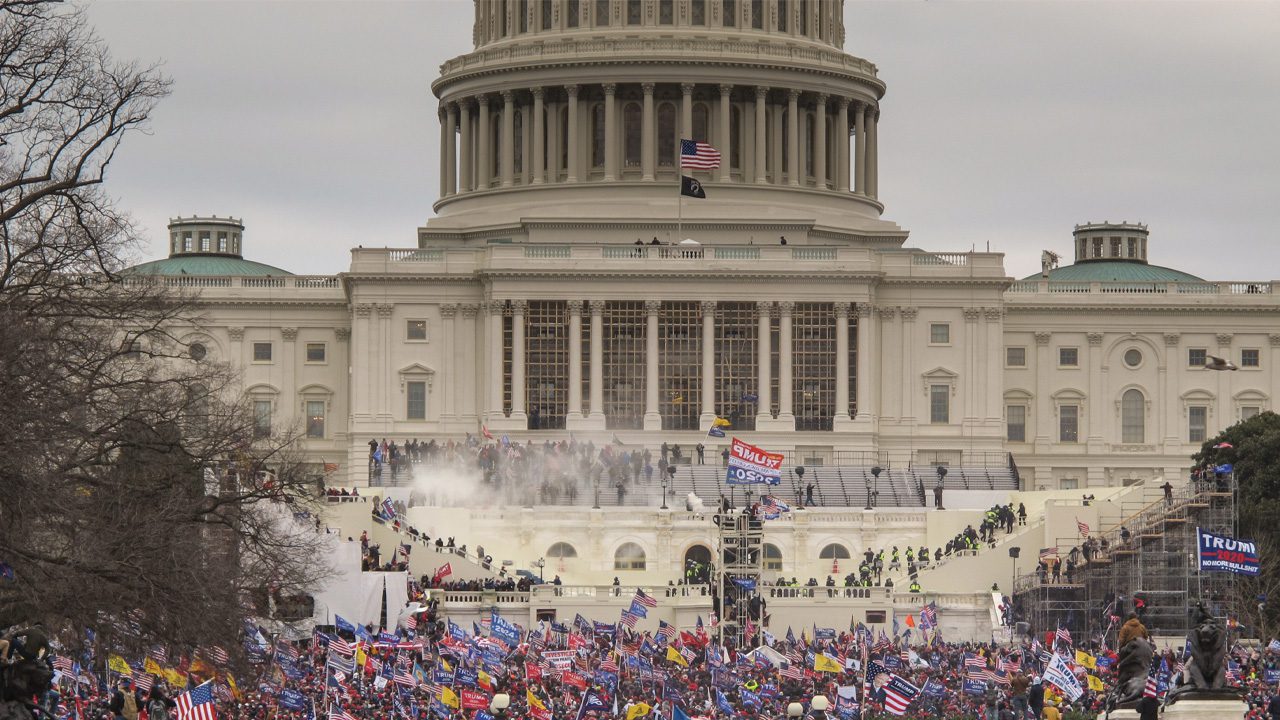
Furman professors Cynthia King, J. Aaron Simmons and Savita Nair address civics education in the context of the Jan. 6 attack on the U.S. Capitol.

